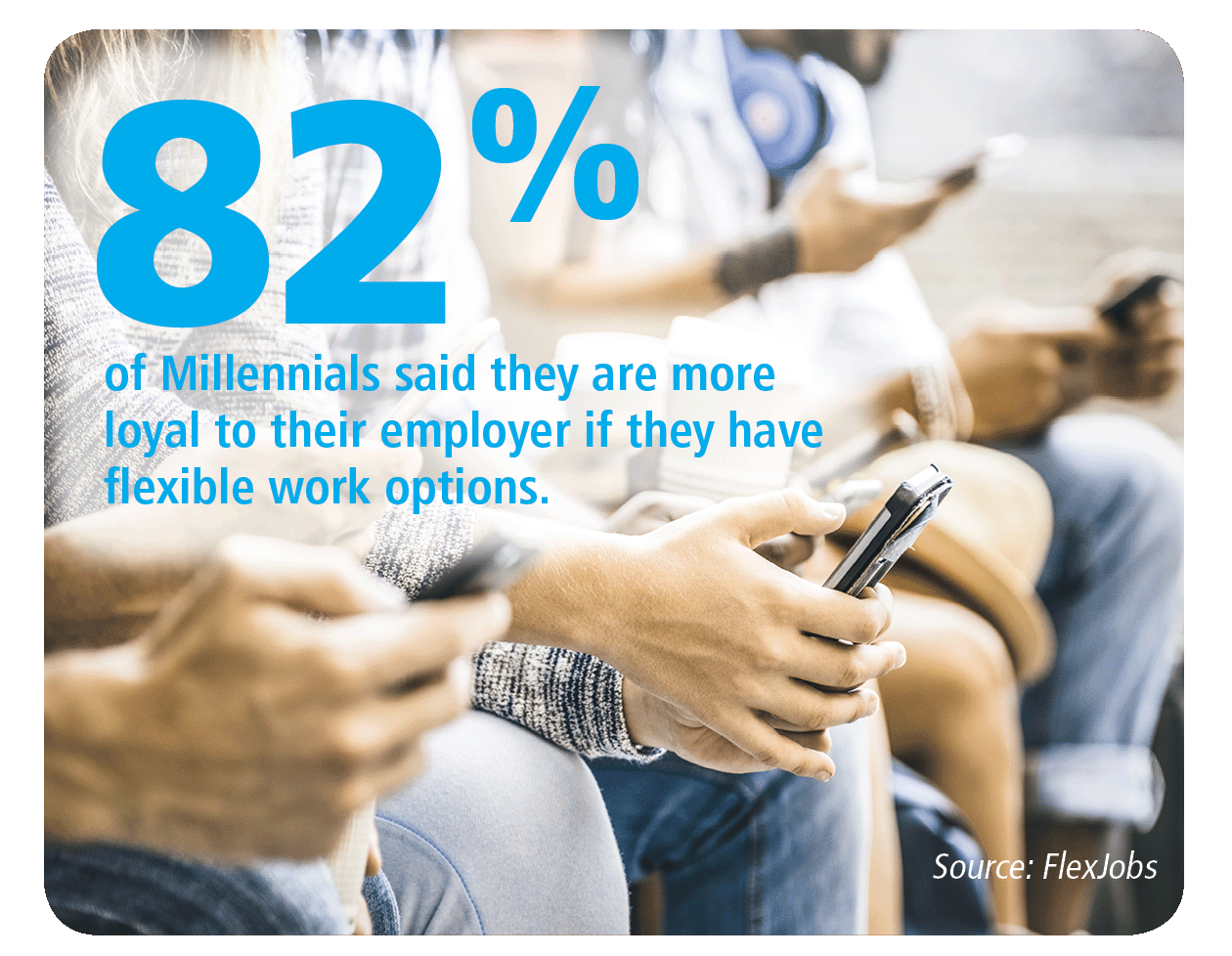Employers are taking a hard look at soft benefits, particularly work-from-home opportunities.
By Tierney McAfee
Working from home is becoming more than just a perk for many employees and job candidates; it’s slowly becoming a norm in today’s workplace.
Data from the 2018 American Time Use Survey shows that among those aged 25 and older, 46 percent of workers with education beyond a high school degree performed some work from home. And according to The Conference Board, “The share of teleworking jobs among jobs added to the economy since the end of the Great Recession is much higher than the share in the overall economy. Between 2010 and 2017, 16 percent of all white-collar jobs added to the economy were filled by workers primarily working from home.”
A tight labor market and the evolving nature of employee preferences are two key factors in this shift, which is transforming the way organizations recruit and retain talent. Companies are increasingly looking outside of pay and job title to focus on the soft attractors that today’s talent market requires.
“We’re seeing greater emphasis placed on soft benefits such as working from home arrangements, flexible work schedules, and training programs,” says Tom Jewett, Vice President of NA RPO Operations at Allegis Global Solutions, a leading provider of global talent acquisition and workforce solutions. “As candidates place higher importance on soft aspects of companies, it is also important that companies pay attention to details such as their culture, mission, vision, work-life balance, and values.”
The work-from-home shift is driving not only the future of talent acquisition but also of talent retention.

Employers can also leverage this perk to entice the approximately 1.6 million people in the U.S. who are what the Bureau of Labor Statistics describes as “marginally attached” to the labor force, which means they want work and have looked within the last 12 months but did not search during the four weeks preceding the Labor Department’s survey.
“Many of these candidates are key to a company achieving their business goals so it’s important to begin factoring some soft attractors,” Jewett says. “These soft attractors can include the company’s culture, their mission and vision, [considering] what will work-life balance look like for these individuals? Do these companies offer flexible work schedules and work-from-home opportunities? Since many of these individuals want to work, it’s important to offer flexible attractors that will allow them to work while also being able to focus on the item that may be keeping them out of the workforce at the present moment, i.e. kids, aging parents, or health factors.”
The U.S. had 7.1 million job openings at the end of August, according to a recent report from the Labor Department. That’s compared with 6 million unemployed people looking for work, and millions more who are out of the labor force and would like a job but are unable to work right now.
“This all means that there are only two people available for every open job and one of them can’t even work right now,” Jewett says. “To say we’re currently experiencing a mass labor shortage would be an understatement. This makes trends like working from home extremely important for organizations to pay close attention to.”














